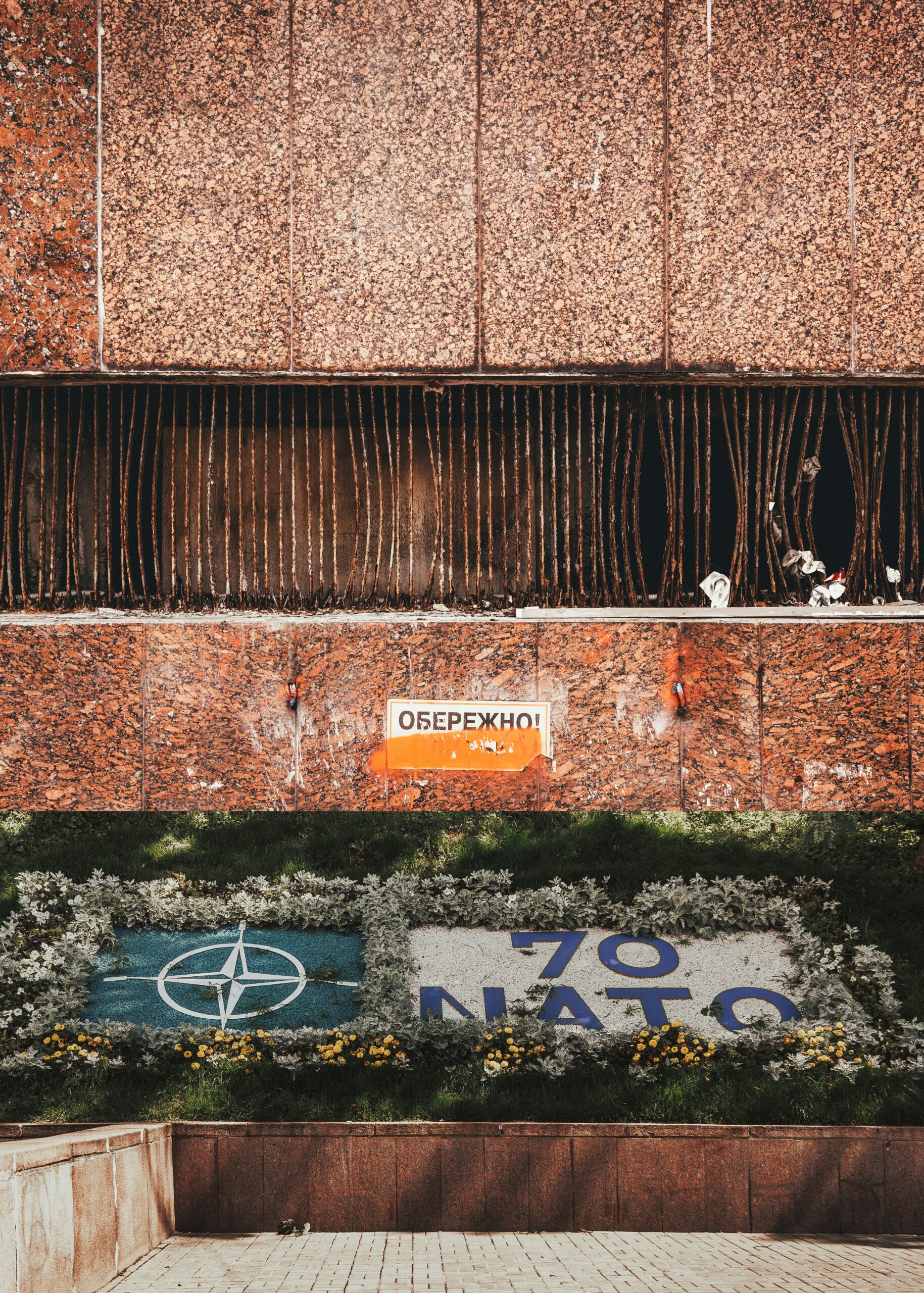Introduction to the Diplomatic Meeting
On a pivotal occasion, NATO Secretary General Jens Stoltenberg and Estonian Prime Minister Kaja Kallas convened to discuss critical issues impacting both Estonia and the broader NATO alliance. This meeting, marked by its strategic importance, took place amidst a backdrop of evolving geopolitical dynamics and security concerns that have significant implications for the region and NATO’s collective defense posture.
The primary objectives of this high-level dialogue were to reaffirm NATO’s commitment to its Eastern European allies and to address the security challenges posed by an increasingly assertive Russia. The discussions underscored the importance of a unified front in deterring potential threats and enhancing the alliance’s defensive capabilities. Secretary General Stoltenberg and Prime Minister Kallas emphasized the need for continued collaboration and solidarity among NATO member states, particularly in strengthening military readiness and cyber defense mechanisms.
Furthermore, the meeting highlighted the role of Estonia as a key player within NATO, not only as a frontline state but also as a contributor to various alliance initiatives. The dialogue explored ways to bolster NATO’s presence in the Baltic region, with a focus on enhancing joint exercises, intelligence sharing, and infrastructure development. These measures aim to ensure a robust and agile response to any contingencies that may arise.
In the context of current geopolitical tensions, the meeting between Stoltenberg and Kallas is a testament to the enduring value of diplomatic engagement and strategic alliances. It reinforces the notion that, in an era of complex security challenges, the strength of NATO lies in its unity and the unwavering commitment of its members to uphold the principles of collective defense and mutual support.
Profiles of Jens Stoltenberg and Kaja Kallas
Jens Stoltenberg has been serving as the NATO Secretary General since October 1, 2014. Under his leadership, NATO has navigated numerous geopolitical challenges, including heightened tensions with Russia and the evolving security landscape in Europe. Before assuming the role of NATO Secretary General, Stoltenberg had a distinguished political career in Norway. He served as the Prime Minister of Norway from 2000 to 2001 and again from 2005 to 2013. Known for his pragmatic approach to politics, Stoltenberg has played a pivotal role in strengthening NATO’s collective defense and promoting cohesion among its member states. His tenure has been marked by efforts to modernize the Alliance and improve its readiness to respond to new threats.
Kaja Kallas, the Prime Minister of Estonia since January 26, 2021, has been a prominent figure in Estonian politics. Prior to her current role, she was a Member of the European Parliament, where she focused on digital innovation and energy policies. Kallas is the first woman to hold the office of Prime Minister in Estonia, and her leadership is characterized by a strong emphasis on digital transformation and cybersecurity. Her strategic priorities include bolstering Estonia’s defense capabilities, fostering economic growth, and enhancing the country’s digital infrastructure. Kallas’s background as a lawyer and her experience in European politics have provided her with a robust platform to advocate for Estonia’s interests on the international stage.
Both leaders bring a wealth of experience and a strategic vision to their respective roles, making their meeting significant for the future of NATO and Estonia. Stoltenberg’s focus on collective defense and Kallas’s emphasis on digital innovation and security complement each other, highlighting the evolving nature of modern security challenges. Their collaboration is crucial in ensuring that NATO remains adaptable and that Estonia continues to thrive as a forward-looking, resilient nation.
NATO’s Strategic Interests in the Baltics
NATO’s strategic interests in the Baltic region are multifaceted, with Estonia playing a pivotal role in the alliance’s defense posture. Geopolitically, the Baltics represent a critical frontier between NATO member states and non-member countries, necessitating a robust security framework to deter potential threats. Estonia, due to its geographical location and commitment to defense, is integral to NATO’s strategy in this region.
The geopolitical importance of the Baltic region cannot be overstated. Situated at the nexus of Northern Europe, the Baltics provide a buffer zone that is crucial for the security of NATO’s eastern flank. The presence of NATO forces in Estonia, Latvia, and Lithuania acts as a deterrent against any aggressive maneuvers from neighboring states, thus preserving regional stability. Estonia’s own military infrastructure and its willingness to host NATO forces further amplify its strategic significance.
NATO has initiated several defense strategies to enhance the security of the Baltics. Key among these is the Enhanced Forward Presence (EFP), which has seen the deployment of multinational battlegroups in Estonia and other Baltic states. These forces are designed to demonstrate NATO’s commitment to collective defense and to act as a rapid response to any potential threats. Additionally, NATO’s Air Policing missions and the Baltic Naval Squadron (BALTRON) play crucial roles in securing the airspace and maritime domains of the region.
Recent military exercises have underscored NATO’s dedication to the Baltics. Exercises such as “Defender Europe” and “Baltic Operations” (BALTOPS) involve large-scale participation from NATO member states, focusing on interoperability and readiness. These exercises not only bolster the defensive capabilities of the Baltic states but also serve as a clear signal of NATO’s resolve to protect its members.
The deployment of NATO forces in the Baltics, including rotational deployments and permanent bases, further solidifies the alliance’s presence. These deployments ensure a continuous and capable defense posture, ready to respond to any threats. Estonia’s hosting of NATO troops and its active participation in joint exercises exemplify its critical role in this strategic framework.
Security Challenges Facing Estonia
Estonia, a small Baltic nation with a strategic geographical location, faces a complex array of security challenges. Chief among these are cyber threats, hybrid warfare, and regional tensions, which require a multifaceted approach to ensure national security. Cyber threats have become particularly pronounced, given Estonia’s advanced digital infrastructure. The nation experienced a significant cyberattack in 2007, which highlighted vulnerabilities in its digital defenses and underscored the importance of robust cybersecurity measures.
In response to these challenges, Estonia has become a leader in cybersecurity, establishing the NATO Cooperative Cyber Defence Centre of Excellence (CCDCOE) in its capital, Tallinn. This center plays a pivotal role in coordinating NATO’s cyber defense efforts, offering training and conducting research to bolster the alliance’s resilience against cyber threats. Additionally, Estonia has implemented strong national cybersecurity policies, fostering collaboration between governmental, private, and academic sectors to enhance its cyber defense capabilities.
Hybrid warfare, which combines conventional military tactics with cyber activities, misinformation, and other non-traditional methods, also poses a significant threat to Estonia. The nation has been proactive in addressing this issue by modernizing its defense forces and increasing its defense spending to meet NATO’s 2% GDP target. Estonia’s strategic approach includes comprehensive training for its military personnel and participation in joint exercises with NATO allies, ensuring readiness against hybrid threats.
Regional tensions, particularly with neighboring Russia, add another layer of complexity to Estonia’s security landscape. Historical context and recent geopolitical developments necessitate vigilance. Estonia has fortified its defense posture through its membership in NATO, benefiting from collective defense agreements and the presence of NATO enhanced Forward Presence (eFP) battle groups. This multinational effort underscores the alliance’s commitment to regional stability and acts as a deterrent against potential aggression.
Overall, Estonia’s strategic responses to security challenges involve a blend of national initiatives and international cooperation. By leveraging its expertise in cybersecurity, modernizing its military, and actively participating in NATO operations, Estonia continues to address its security concerns effectively and uphold its sovereignty in a dynamic and often unpredictable regional environment.
Key Discussion Points from the Meeting
The meeting between NATO Secretary General Jens Stoltenberg and Estonian Prime Minister Kaja Kallas was marked by a comprehensive dialogue on several pivotal issues. A primary focus was on defense spending. Both leaders reaffirmed their commitment to meeting NATO’s defense spending guidelines, highlighting the importance of sustained investment in military capabilities to ensure the alliance’s readiness and resilience. Estonia, in particular, was commended for its steadfast dedication to allocating over 2% of its GDP to defense, serving as a model for other member states.
Military collaboration was another significant point of discussion. Stoltenberg and Kallas explored ways to enhance joint training exercises and the integration of forces across the alliance. They stressed the necessity for seamless coordination and interoperability among member nations’ armed forces to effectively address emerging threats. The commitment to bolstering NATO’s presence in the Baltic region was reiterated, with plans for expanded multinational battalions and increased rotational deployments.
Cyber defense emerged as a critical area of concern, reflecting the growing recognition of the cyber domain’s strategic importance. Both leaders underscored the need for robust cyber defense mechanisms and the sharing of best practices to counter increasingly sophisticated cyber threats. They agreed on the urgency of enhancing NATO’s cyber capabilities and fortifying the alliance’s cyber resilience.
Beyond these core areas, other critical issues were also addressed. Discussions included the evolving security dynamics in the Eastern European and Baltic regions, the strategic implications of Russia’s actions, and the importance of maintaining a unified stance within NATO. The leaders also touched upon the significance of innovation in defense technologies and the role of NATO in fostering technological advancements to stay ahead of potential adversaries.
In conclusion, the meeting between Stoltenberg and Kallas underscored the steadfast alliance between Estonia and NATO, marked by a shared commitment to collective defense and security. New initiatives and agreements reached during the talks are poised to strengthen NATO’s capabilities and enhance its readiness to respond to future challenges.
Implications for NATO-Estonia Relations
The recent meeting between NATO Secretary General Jens Stoltenberg and Estonian Prime Minister Kaja Kallas could mark a pivotal moment in NATO-Estonia relations. This high-level engagement underscores the importance of Estonia within the NATO alliance, particularly in the context of regional security and defense strategies. As a frontline state, Estonia’s role in NATO’s collective security architecture is critical, and the outcomes of this meeting are likely to have significant implications for both entities.
One of the key areas of focus during the meeting was joint defense strategies. Given Estonia’s geographical proximity to Russia, the discussions likely emphasized the need for enhanced deterrence measures and rapid response capabilities. Strengthening NATO’s eastern flank through increased military presence and infrastructure development could be a direct outcome of these talks. Additionally, the meeting may pave the way for more frequent and comprehensive military exercises, aimed at improving interoperability among NATO forces stationed in the Baltic region.
Military cooperation between NATO and Estonia is poised to deepen as a result of this diplomatic engagement. Enhanced intelligence sharing, joint training programs, and the deployment of advanced defense technologies are potential areas of collaboration that were likely discussed. These measures would not only bolster Estonia’s national security but also contribute to the overall resilience of NATO’s defense posture in Eastern Europe.
On the political front, the meeting reinforces Estonia’s commitment to NATO and its strategic alignment with the alliance’s core principles. This alignment is crucial in the face of emerging security challenges, such as cyber threats and hybrid warfare, which require a coordinated and united response. The diplomatic engagement also signals to other NATO member states the importance of solidarity and collective defense, potentially influencing broader alliance policies and decision-making processes.
In the long term, the outcomes of the Stoltenberg-Kallas meeting could lead to a more integrated and robust NATO-Estonia relationship. Enhanced military cooperation, strengthened defense strategies, and reinforced political alignment are likely to result in a more secure and resilient alliance, capable of addressing both current and future security challenges in the region.
Regional and Global Reactions
The diplomatic meeting between NATO Secretary General Jens Stoltenberg and Estonian Prime Minister Kaja Kallas has elicited a range of reactions from regional and global actors. The Baltic states, in particular, have shown strong support for the strengthening of NATO-Estonia ties. Latvian President Egils Levits emphasized that this alliance is crucial for regional stability, stating that “Estonia’s commitment to NATO reinforces the collective defense strategy that is vital for our region’s security.” Similarly, Lithuanian Foreign Minister Gabrielius Landsbergis highlighted the importance of a cohesive NATO presence in the Baltic area as a deterrent against potential threats.
Among NATO member countries, the meeting has been widely praised as a step towards enhancing collective defense and unity within the alliance. German Defense Minister Annegret Kramp-Karrenbauer pointed out that “the collaboration between NATO and Estonia sets a precedent for other member states, showcasing the strength that comes from unity and shared objectives.” French President Emmanuel Macron also expressed support, noting that “the reinforcement of ties with Estonia is a significant move towards a more secure and cooperative Europe.”
Global powers have also taken note of the meeting, with reactions varying based on geopolitical interests. The United States, a key NATO ally, has welcomed the development. U.S. Secretary of State Antony Blinken remarked, “Estonia’s proactive engagement with NATO is a testament to the resilience and adaptability of our alliance in the face of evolving security challenges.” On the other hand, Russia has viewed the meeting with skepticism. Russian Foreign Minister Sergey Lavrov commented that “the expansion of NATO’s influence in the Baltic region is perceived as a direct threat to our national security.”
Experts in international relations have provided further insights into the implications of this meeting. Dr. Elizabeth Smith, a professor of geopolitical studies, asserted that “the strengthening of NATO-Estonia relations is a strategic move that enhances regional deterrence and aligns with the broader objectives of NATO in maintaining global security.” Dr. John Anderson, a senior fellow at a think tank, added that “this meeting signifies a commitment to collective defense, which is essential for countering emerging threats in today’s multipolar world.”
Conclusion and Future Prospects
The diplomatic meeting between NATO Secretary General Jens Stoltenberg and Estonian Prime Minister Kaja Kallas underscored the enduring commitment and shared values between NATO and Estonia. This high-level engagement highlighted the strategic importance of Estonia within the NATO alliance, especially given the current geopolitical climate. Both leaders reaffirmed their dedication to mutual security, regional stability, and the principles of collective defense.
Key takeaways from the meeting include a renewed focus on enhancing military readiness and interoperability among NATO member states. The discussions emphasized the necessity for continued investments in defense capabilities and the modernization of military infrastructure. Estonia’s role as a crucial player in the Baltic region was acknowledged, with particular attention given to its contributions to NATO missions and its strategic position in deterring potential threats.
Looking forward, the future prospects for NATO-Estonia relations appear promising. Both parties have pledged to deepen their cooperation in various domains, including cybersecurity, intelligence sharing, and counter-terrorism efforts. The meeting also pointed to the importance of joint military exercises and training programs to bolster collective defense mechanisms. Furthermore, there is an anticipation of increased collaboration in technological innovations that enhance defense capabilities, such as artificial intelligence and advanced surveillance systems.
The commitment to upholding the principles of democracy, rule of law, and human rights remains a foundational aspect of this partnership. As NATO continues to adapt to emerging security challenges, Estonia’s proactive stance and strategic initiatives will be pivotal in shaping the alliance’s future trajectory. The meeting between Stoltenberg and Kallas serves as a testament to the resilient and evolving nature of NATO-Estonia relations, setting a robust framework for future engagements and cooperative endeavors.


